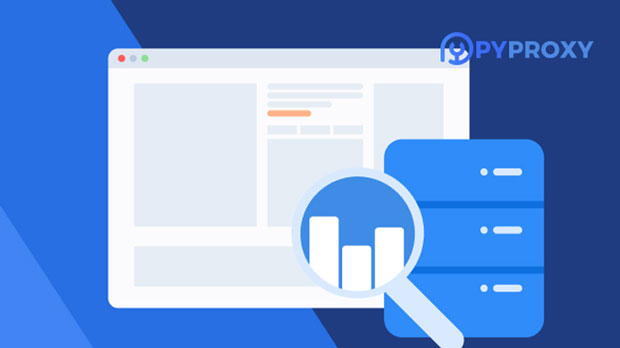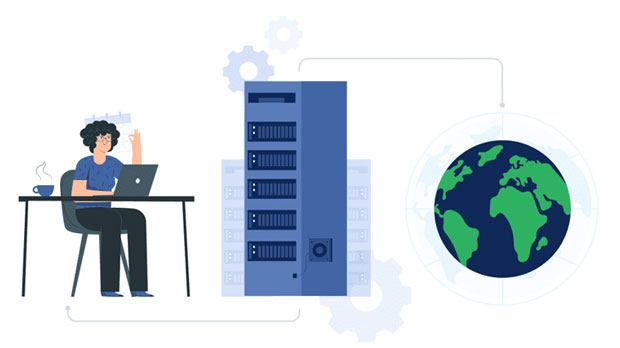The choice between PYPROXY and FoxyProxy often comes down to a variety of factors, including performance, flexibility, and delay times, especially when comparing their behavior under different protocols like HTTPS and HTTP. This article explores the delay differences between PyProxy and FoxyProxy under both of these protocols, providing an in-depth analysis of how each proxy service handles traffic, data encryption, and network communication. For users relying on proxies for tasks like web scraping, secure browsing, or location masking, understanding these differences can help optimize performance and user experience. Understanding Proxy Performance and DelayWhen discussing proxies, particularly PyProxy and FoxyProxy, it’s crucial to define what is meant by delay. Delay refers to the time it takes for a data request to travel from the client to the server and back, commonly measured in milliseconds. In the context of proxies, this delay is influenced by several factors, including the proxy's infrastructure, the protocol being used, the encryption overhead, and how efficiently the proxy handles incoming and outgoing traffic.Proxies that work with HTTPS generally introduce more delay compared to those using HTTP, due to the added complexity of encrypting and decrypting data. The specific delay experienced with PyProxy and FoxyProxy under these protocols can vary based on the proxy's design, server locations, and how they handle SSL/TLS connections, among other factors.Comparing PyProxy and FoxyProxy Under HTTPUnder the HTTP protocol, both PyProxy and FoxyProxy exhibit relatively low latency due to the absence of encryption overhead. HTTP (Hypertext Transfer Protocol) is a simpler, unencrypted communication protocol, which means there are fewer steps involved in establishing a connection. Data is sent in plain text, which allows faster communication between the client and the server.In terms of delay under HTTP:- PyProxy: PyProxy, being a Python-based proxy solution, is often praised for its minimalistic design. It typically introduces low latency as it doesn’t require heavy encryption or complicated tunneling processes. This makes it a suitable option for users looking for speed with fewer layers of abstraction.- FoxyProxy: FoxyProxy, on the other hand, is often used as a browser extension to route traffic through a chosen proxy. While it also operates under HTTP without encryption, its architecture introduces a slight overhead, particularly in scenarios where multiple proxy servers are involved. However, for simple use cases with a direct proxy route, FoxyProxy’s delay under HTTP is also minimal.In general, the difference in delay between PyProxy and FoxyProxy under HTTP is negligible for most users. The delay in both cases is dependent largely on factors like network conditions, server response times, and the number of hops involved.How HTTPS Affects Proxy Delay: The Role of EncryptionWhen switching from HTTP to HTTPS (Hypertext Transfer Protocol Secure), the key difference is the inclusion of SSL/TLS encryption. This encryption ensures that all data exchanged between the client and server is secured, preventing eavesdropping or tampering. However, this added layer of security also introduces additional delay due to the encryption and decryption process.In the case of both PyProxy and FoxyProxy, the delay under HTTPS can be significantly higher compared to HTTP. The additional overhead of establishing a secure connection, performing SSL/TLS handshakes, and encrypting/decrypting each data packet results in more time taken for requests to complete.- PyProxy Under HTTPS: Since PyProxy is a lightweight proxy solution, it handles HTTPS traffic by implementing SSL/TLS encryption and decryption. While it is generally optimized for performance, users may still notice an increase in delay when using PyProxy under HTTPS compared to HTTP. This is primarily due to the time needed for the secure handshake and encryption processes.- FoxyProxy Under HTTPS: FoxyProxy, as a browser extension, typically relies on the browser’s SSL/TLS capabilities to secure connections. While this can reduce the strain on FoxyProxy itself, the encryption still adds some delay. In scenarios where multiple proxies are used or when dealing with high levels of traffic, the added delay from SSL/TLS encryption may be more noticeable.Both proxies are affected by SSL/TLS encryption, but the extent of the delay can depend on factors such as the strength of the encryption, the number of hops between proxies, and the specific configuration of the proxy servers.Factors Influencing Delay DifferencesSeveral factors influence the delay differences between PyProxy and FoxyProxy under both HTTP and HTTPS. Let’s explore these factors in detail:1. Proxy ArchitectureThe internal architecture of each proxy plays a significant role in the delay experienced. PyProxy, being a Python-based solution, is highly customizable and can be optimized for minimal delay, especially when used under HTTP. On the other hand, FoxyProxy is often used as a browser extension, which can introduce some additional overhead, especially when handling multiple proxy connections.2. Network Conditions and Server LocationsNetwork conditions such as bandwidth, latency, and server load can affect delay. Both PyProxy and FoxyProxy rely on external proxy servers, and their locations can influence how quickly data is transferred. If a proxy server is far from the client or experiencing high traffic, the delay will increase.3. SSL/TLS HandshakesUnder HTTPS, the delay introduced by SSL/TLS handshakes is a key factor. The initial handshake process, where the client and server exchange encryption keys and validate each other’s identities, adds a noticeable delay. This process can vary based on server performance and the complexity of the encryption.4. Proxy ConfigurationThe way each proxy is configured can also impact its performance. For example, PyProxy allows users to fine-tune its settings, potentially optimizing it for lower latency. FoxyProxy, however, is more focused on ease of use and may not offer as many granular optimization settings.Conclusion: Which Proxy to Choose Based on Delay?When choosing between PyProxy and FoxyProxy, the decision often boils down to the specific use case and the required balance between speed and security. - For low-latency applications where HTTPS is not necessary, PyProxy under HTTP is likely to be the best choice, as it is a lightweight solution that can be easily optimized for performance.- For secure browsing or tasks that require encryption, such as data scraping or accessing sensitive information, FoxyProxy under HTTPS might be the better option, despite the added delay. The trade-off between security and performance is something that each user needs to evaluate based on their needs.Ultimately, the delay differences between PyProxy and FoxyProxy under HTTPS and HTTP are influenced by several factors, including encryption overhead, network conditions, and proxy configurations. Understanding these elements can help users make informed decisions when selecting a proxy for their specific needs.
Sep 10, 2025



































































